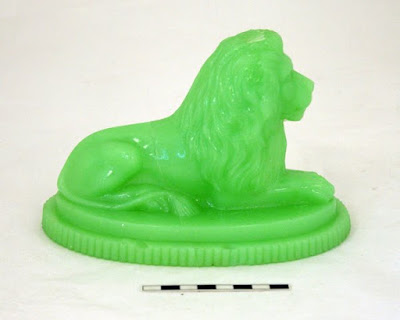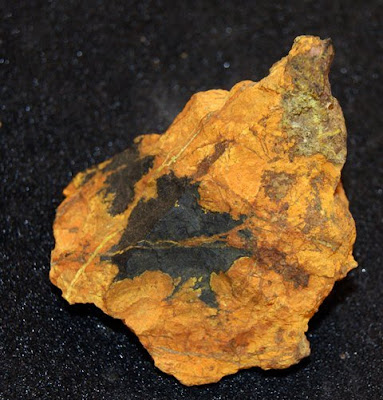 |
| Victorian lion glass paperweight made by James Derbyshire & Sons, (pictured under normal light) |
Some of our glassware has a unique property, it glows under UV light. This is due to very small amounts of the element Uranium found in the glass. Uranium was deliberately added to glass from the early 19th Century right through to before the Second World War, with a few instances up until the late 20th Century.
Why was Uranium added to the glass?
Uranium gives a unique type of colour to glass, turning it a green/yellow shade. This effect is described as 'Vaseline Glass', although it can be found in a variety of colours. While Iron is a cheaper alternative to creating green glass, Uranium allows glass to become fluorescent. In the Victorian home, with low lighting levels, this glass would have stood out more in the early evening light, giving it a slight glow - something we would not notice in today’s light saturated homes!Our Glowing Lion
 |
| Victorian glass paperweight made by Derbyshire & Sons in 1874 (pictured under UV light) |
The colour of the glass tipped us off that he may be very slightly radioactive and that under UV light he would glow in the dark! A sweep of the Geiger counter confirmed this, although the levels detected were very low. After careful conservation we tried photographing the lion in the dark under a UV light source, not an easy thing to do! The lion is now carefully stored behind Perspex™ in a ventilated store with other examples of this types of glass and ceramic.
Other 'glowing' objects in our collections
 |
| A piece of Uraninite |
By Emma Bowron, Conservator





No comments:
Post a Comment